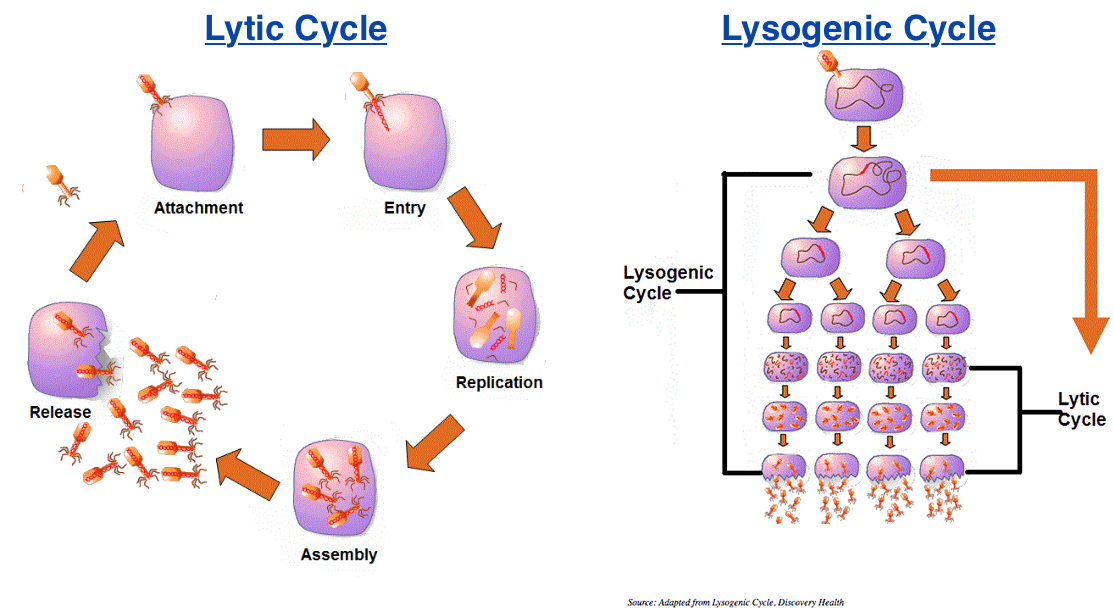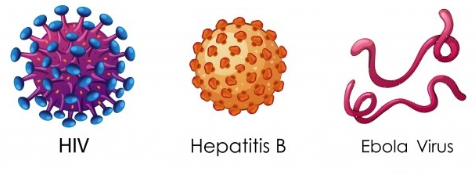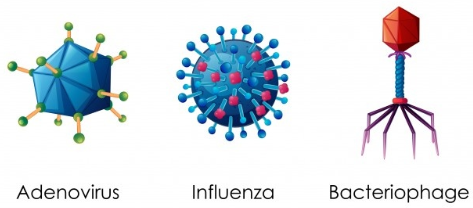Viruses are organisms that lie at the boundary between living and non- living organisms. They are non-cellular organisms and have an inert crystalline structure outside a living cell. Once a virus infects a host cell, they will become alive and takes over the host cell machinery to divide themselves. They are thus obligate parasites. The name ‘virus’ means venom or poisonous fluid. It was given by Dmitri Ivanowsky in 1892.
Virus: Structure
A virus particle consists of a genetic material (either DNA or RNA) enclosed within a protein coat known as capsid. The capsid is composed of small subunits called capsomeres arranged in a helical or polyhedral structure.




Virus: Genetic material
The genetic material could be RNA or DNA, but never the both. Virus that infects plant cells are usually single stranded RNA viruses, and those that infect animals can be single stranded RNA (ss-RNA), double stranded RNA (ds-RNA) or double stranded DNA (dsDNA) viruses. Bacteriophages (virus that infect bacteria) are usually ds-DNA viruses.
Virus: Replication
Virus is an inert particle outside a cell. When it infects a host cell, the virus attaches to the cell surface and inserts its genetic material into the cell.

This genetic material gets incorporated into the host genome and directs the cell to produce more viral proteins and viral genetic material instead of its usual products. Inside the cell, the virus enters two phases.
- Lysogenic phase: The infected cells continue to produce more viral proteins and genetic material continuously, and remain dormant for a long time, until they receive a stimulus.
- Lytic phase: When he dormant virus – infected cells receive a stimulus, the viral proteins assemble around each viral genetic material to form capsids, and thus new virus particle are formed. They, then burst out by killing the host cell, and invade new host cells.

Viral Diseases
Virus can cause many diseases in eukaryotic organisms. The viral diseases that can occur in humans include smallpox, common cold, mumps, influenza, herpes, chickenpox, shingles, rabies, Ebola, polio and AIDS. It can also cause cancer, in some cases.
.



Viral infection in plants causes stunted growth, dwarfism, mosaic formation on leaves, leaf rolling, leaf curling, yellowing, and vein clearing.
